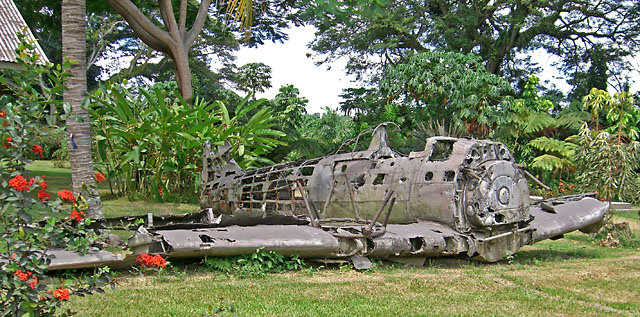
|
|
Google Earth Image with GPS Track
from Guadalcanal to Rabaul (turquoise) |
The
next port after Honiara was Rabaul,
Papua New Guinea
(PNG). En route the
ship sailed in the "Slot", the
route
between islands used by the Japanese
"Tokyo Express" to supply their
forces on various islands from Rabaul.
Rabaul is located on a large
circular bay, which is an old
caldera. It was a German colony
circa 1880-1918. After WW1 the
League of Nations assigned it to
Australian mandate. |
|
|
Approaching Rabaul, Looking NW |
|
Taken at 6:30 AM.
There are two volcanoes near
Rabaul. One was erupting lots of steam,
as seen in this view from the
ship.
|
|
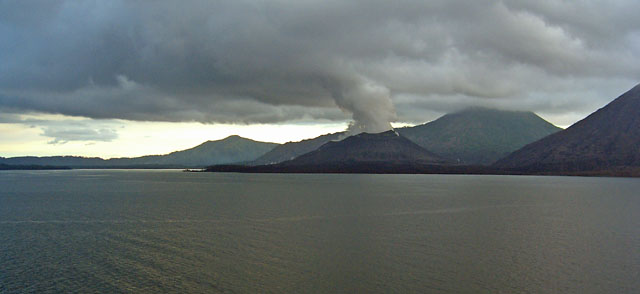 |
|
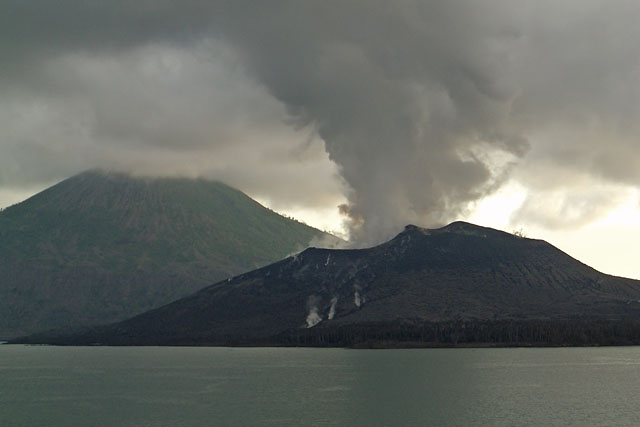
|
|
Approaching Rabaul, Looking ENE |
| |
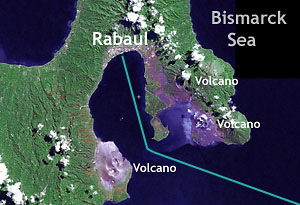 |
|
Nearing the Dock at Rabaul |
|
In
early 1941 about 1000
Australian troops and a half
dozen planes were stationed
here to defend against
possible Japanese attack.
After Pearl Harbor, Japan
sent 5000 troops plus
overwhelming navy and air
forces to take Rabaul, which
they did handily. The
Australians officially
surrendered but some escaped
into the jungles. Many
prisoners, including nurses
wearing red cross bands,
were executed and some were
tied to trees and used for
bayonet practice.
The Japanese built Rabaul
into a major land/sea/air
base. They brought in
primarily Indian POWs from
Singapore and forced them to
build an elaborate (and
impressive) network of
tunnels, some of which were
defensive fortifications and
others were bomb proof
shelters and storage places.
|
|
 |
|
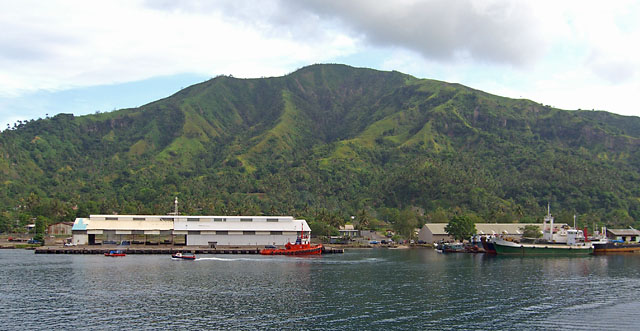
|
|
Rabaul Dock |
|
A
volcanic eruption in 1994 buried
most of Rabaul with thick ash, which
rains turned into “cement”.
The town was abandoned and most of
the residents, the airport, and the provincial
government offices moved to Kokopo,
some 20 miles SE. A few people
have resettled parts of the town.
Our
docking was delayed an hour waiting
for a freighter to leave the only
dock in port.
|
|
|
Native Dancers |
|
Native
dancers performed on the dock.
They had drums, but no
instruments. There bodies were
not painted as the Guadalcanal
dancers were.
|
|
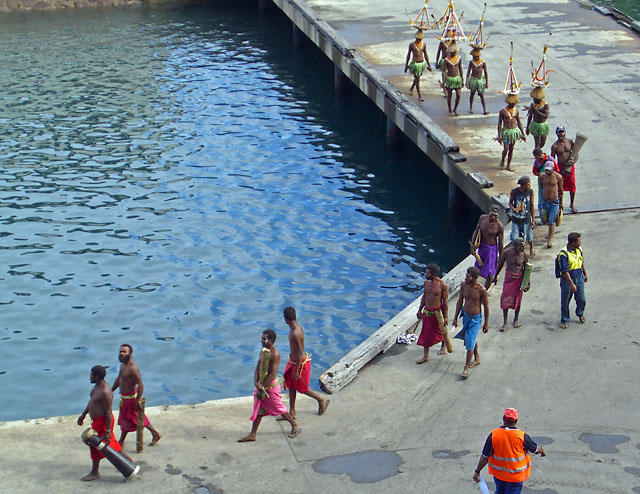 |
|

|
|
Rabaul Tour Vans |
| I took
a 4 hour tour which began at 9:00
AM. The tours were in un-air
conditioned 10 pax Toyota vans,
which normally were the area’s
public transit buses. It was hot and
sticky. About half of the main road
was dirt (it had been paved sometime
in the past, but has deteriorated)
so there was lots of dust coming in
the open windows. The guide’s name
was Sammy
(waving by the 2nd van) and the driver was
Michael. Sammy was very good and
fluent in English, which is the
official language here though there
are many native languages and pidgin
is widely spoken. He said folks here
are very interested in the US
elections, and he predicts Clinton
will win. They follow the campaign on CNN. PNG
has a parliamentary system, based on
the British model.
|
|
|
Japanese Barge Tunnel |
Our
first stop on the tour was a
former Japanese barge
tunnel, which held up to 8
of the armored self
propelled barges used to
supply their forces in the
Solomon's. There were rails
in the cave and into the
ocean which were used to
launch the barges. Very
clever! |
|
 |
|
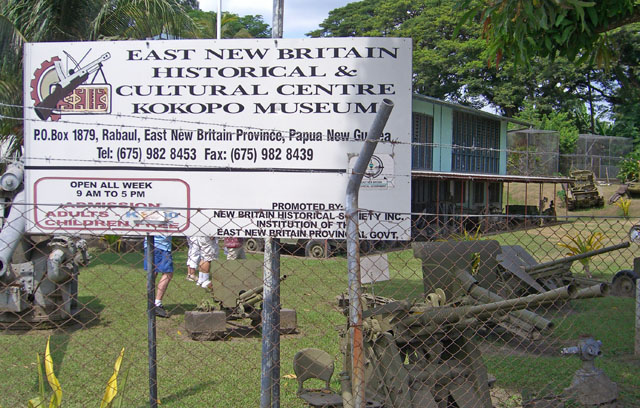
|
|
Museum |
|
Our next
stop was at the Kokopo Cultural and
War Museum. Many WW2 items and
wrecks of planes taken from the bay.
|
|
|
|
|
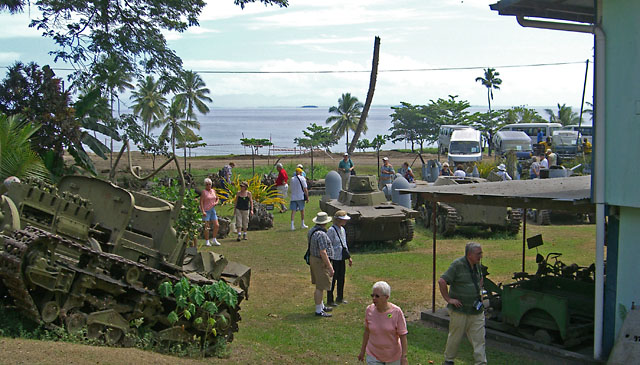
|
|
Japanese Equipment |
|
Except for
airplane remnants, most of the equipment
displayed at the Museum was
Japanese, as the Allies did not have
ground operations here
(excepting
early 1942).
|
|
|
Japanese Long Lance Torpedo |
This torpedo
completely outclassed
American torpedoes,
especially early in the war,
and was used with great
success in night naval
battles around Guadalcanal.
|
|
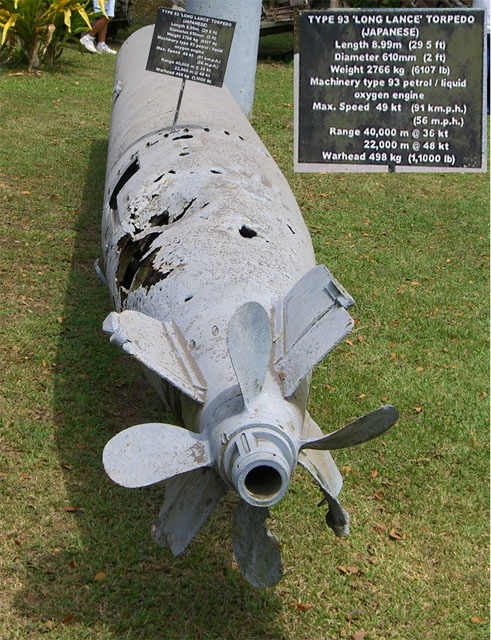 |
|
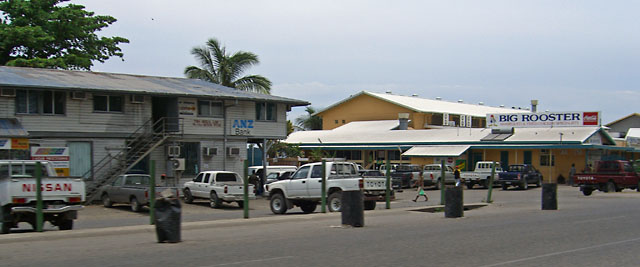
|
|
Shopping Area |
|
We saw
open air farmers type markets as
well as conventional stores. Many of
the latter are owned by Chinese,
similar to Guadalcanal.
As we drove along the road most of
the many people along the roadside
waved and yelled in a friendly
manner.
|
|
|
Local Boy |
Here,
as in Guadalcanal, the
native population is
Melanesian and many of the
children have blondish hair.
Some
things about the Rabaul area: The
main food is bananas. Coconuts are a
principle crop, primarily for their
oil. We saw many compact pickups loaded
with coconuts waiting in line to
unload at the coconut oil factory.
Balsa trees are grown for the wood.
Mangoes and papayas are grown. Rabaul has wet and dry seasons, the
months similar to California but the
amounts are much higher. |
|
 |
|

|
|
Bitapka War Cemetery |
We
visited the (Australian) Bitapka War
Cemetery where victims of the
Japanese atrocities and war dead are
buried. It is a beautiful well
maintained place. Spoke with the PNG
caretaker, who was justifiably proud
of his work. Also talked with him
and Sammy about many of the bronze
plaques, which are in English and
Pidgin. Learned that pidgin here is
a mixture of German, English, and
native tongues. (The bottom
half of the sign is Pidgin.)
|
|
|
|
|
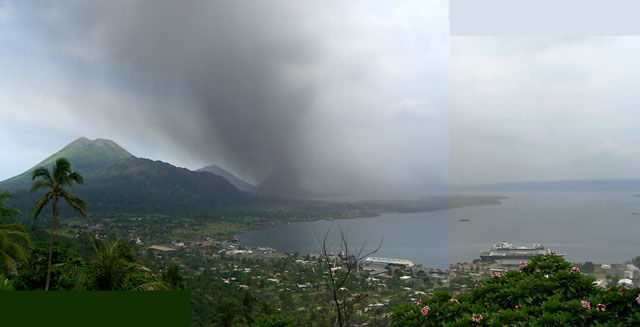
|
|
Ash Eruption from the
Observatory |
|
Our last stop was the
Volcanology Observatory,
which is on a hill near the
ship. On the way there the
volcano eruption changed
from steam to ash, which
“rained down” everywhere. We
cut the visit short and
returned to the ship
(lower
right).
The
Captain closed all outside
areas because of the health
hazard of breathing it, the
hazard of slipping and
falling on it, and the fact
they didn’t want it tracked
into the ship. He also
cancelled all shore leaves
for the crew. He said the
locals told him this was the
heaviest ash eruption in a
long time. |
|
|
From the Ship Ready to Depart |
Taken
thru a window at
5:00 PM as the ship cast off to sail
to Yap.
The ship's
crew worked hard overnight to remove
the ash deposits. They did a
good job. |
|
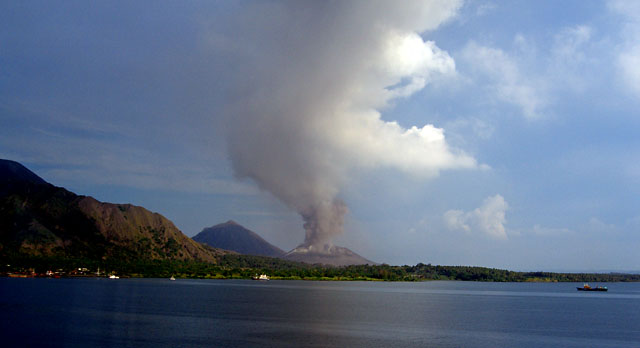 |
|









